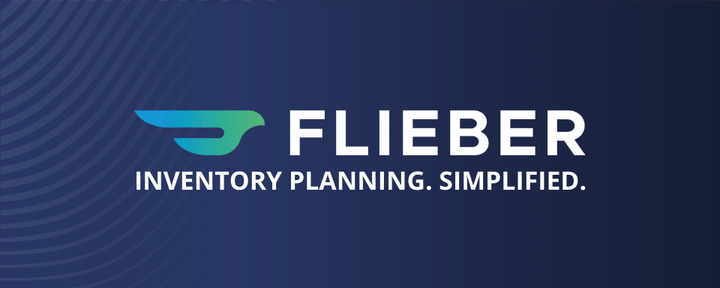Managing inventory is arguably the hardest task of any retail brand. That is especially true for e-commerce, where sales, advertising, payments and even the customers are digital and can be managed with the click of a button, while inventory is still physical and needs real-world interactions to be produced, moved and stored.
Let's assume that you sell only through Amazon US' marketplace, that you only have 10 SKUs, being SKU A your best-seller, that your products are all manufactured locally, and that your total sales are in the $500k/year range. The complexity to manage inventory isn't huge, since local suppliers mean shorter lead times, and shorter lead times allow for quick course corrections in case things deviate too much from what you had planned.
Now let’s assume the same scenario, but you have ramped up to 200 SKUs. Your first best-seller is sharing importance with other two top-selling products. You have different suppliers and different production and shipment lead times; you're spending a considerable amount of time engaging with these suppliers and it's paying a toll on you, as time for dedicating to other important tasks is becoming scarce. Your spreadsheets are also considerably bigger and you spend a good part of your week pasting data, updating calculations, and analyzing the outputs. Your sales are reaching $1 million.
Continuing with the scenarios, let's assume now that you decide to expand to other local Amazon marketplaces through the NARF program. Your inventory continues to be the same, but now you also sell in Canada and Mexico. You have to combine the sales of the three countries to generate forecasts. You also have to start adding the French language to your product labels, as this is a requirement to legally sell products in the Canadian market. Forecasting for that many products in three countries is very time consuming, and you decide to hire your first VA.
It's time for you to expand to international Amazon marketplaces. You start with Europe. The UK is the biggest individual market, but the other countries combined are much bigger than the UK alone. You decide to expand to all of them. The problem is that, since Brexit, the UK can't be part of the Pan-EU program for shared inventory, and has to have a separate inventory dedicated to it. That makes you now have three points of inventory: FBA North America (through the NARF program), FBA Europe (through the Pan-EU program), and FBA UK. The complexity to manage demands to each location gets considerably higher, and your spreadsheets start to become Frankensteins.
Although your sales are now a little over $1.5 million, you already have to hold too much inventory of some of your products on FBA and the fees charged by Amazon have become prohibitive. So, you decide to bring inventory to a 3PL and use it as a storage location. You ship products to Amazon every 15 days to keep a higher turnover and lower costs. You now have five points of inventory: FBA North America (through the NARF program), FBA Europe (through the Pan-EU program), FBA UK, 3PL US and 3PL Europe. Managing what needs to be purchased from suppliers and sent to the 3PLs, and what needs to be transferred from the 3PLs to Amazon has become unbearable, and you decide to hire a second VA to help you out.
Since you have products in 3PLs both in the US and in Europe, you might as well take advantage of that inventory and launch your e-commerce website. You build a Shopify site. The sales are fulfilled by the 3PLs, which also continue to transfer products to FBA when needed. You didn't know how much complexity that would add! Having two sales channels with different patterns feeding from the same inventory makes forecasting way harder. As a result, the moving averages based on 30-day sales velocity that you use in your Excel spreadsheets start bringing you problems, and you see more and more the best-sellers running out of stock and the slow-movers being overstocked. This combination of lost sales due to stockouts and trapped capital due to overstocks is killing you, and you decide to hire someone more specialized to help you out.
With a team of four (you, a full-time employee, and two VAs), the time you waste managing people and tasks increases exponentially. Since you relied too much on Amazon, you pay outrageous fees and your gross profit is in the low double-digits. The combination of a higher operational cost with lower gross margins has a deep impact on your bottom line profitability. You need to find ways to save money and one of the easiest ones is to increase your volume, so that you can have better unit economics for your products. The easiest path to volume? Wholesale.
You make a couple of agreements with local wholesalers in the US and they place their first POs. Now, you have a channel with a completely different sales behavior to deal with. Instead of daily sales that you can use to identify trends, all you have is a PO from the wholesalers every couple months. You start having even more problems with forecasting, and you fail to cover some of those wholesale orders. At this stage, your spreadsheet has become a set of five connected spreadsheets. One of your VAs is almost exclusively dedicated to keeping them updated, but you're surprised more often than you'd like by bad decisions due to errors in formulas or in copy-paste of data.
Another way to increase volume is to start offering bundles that combine individual SKUs into new offerings. And that's what you do. You create multiple bundles. For products fulfilled by FBA, you have to pack and send the bundles as unique products. But for products from Shopify, you can keep the bundles "virtual": you store the individual items and, once someone purchases a bundle, your 3PL packs the items of the bundle in the same package. Genius! The only problem is that you now have to be able to break the forecast of the bundles into individual units before you place a PO to your supplier. And that creates a new set of challenges. What if you have one of the items in the bundle, but don't have the other? That means that you won't be able to sell the bundle and that item that you have in stock will increase the number of days of stock that you have of the individual SKU. Complex? A lot!
Meanwhile, your Shopify site is starting to pick-up, but acquisition cost is way too high. You decide to bring new products to your portfolio that you can offer through a subscription model. Enabling it on Shopify is really easy: you simply sign up for a subscription app, do the setup and, voilá! But, boy, if only you knew how incredibly hard it would be to add this dimension to your inventory management. Now, besides managing the complexities of planning for multiple channels, adding POs from wholesalers to the mix, splitting demand from bundles into individual SKUs, among many others, you also have to have a separate control of your subscriptions. After all, your subscription customers cannot not receive their items at their next agreed delivery date.
At this stage, you're selling $5 million, but have the complexity of a nine-digit brand! You lose your sleep every night, your operations team is completely overwhelmed, your spreadsheets are breaking every single day. You have built endless separate controls, but ultimately decisions are a lot more based on intuition than on real data, since you can't grasp all the complexity of gathering and processing that amount of data. You're physically and mentally broken! All that you can think is that you didn't sign up for that when you had the decision to start an e-commerce business seven years ago.
This text looks like an exaggeration, but it's a pretty accurate tale of an e-commerce founder through the optics of operations. Inventory is by far the most complex aspect of modern retail. Yet, most founders are so caught up in their growth that they end up neglecting that side of the business. And this is exactly what breaks them and kills their brands.
Understanding that the retail game is pretty much about operations is the main trait of really successful brands. With technology being deployed in many fronts, it's time for founders and operators to finally step up their game and upgrade from their clunky spreadsheets. Yes, we know they're great, but they're simply not enough to deal with all the complexities of modern retail.
If you're a founder who's already facing some of the complexities mentioned above, or if you're an ambitious founder who wants to build a notable retail brand, implement an inventory planning system asap. Operating with an established process since the early days may be what will enable you to have a profitable business later on.



-1.png)

